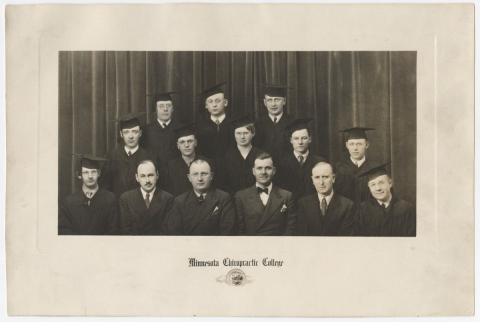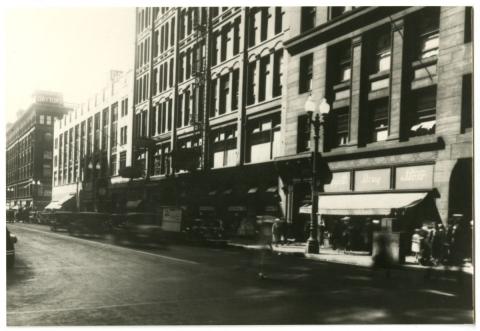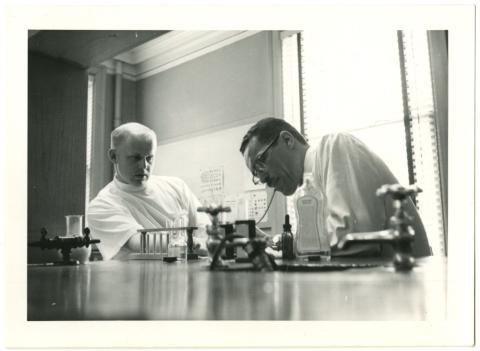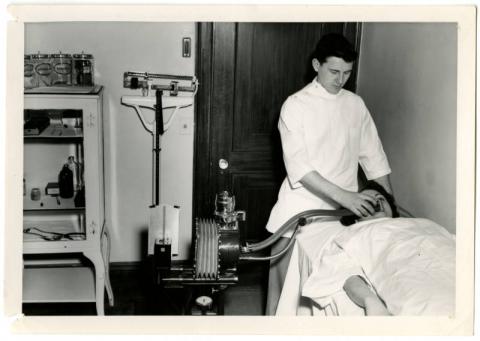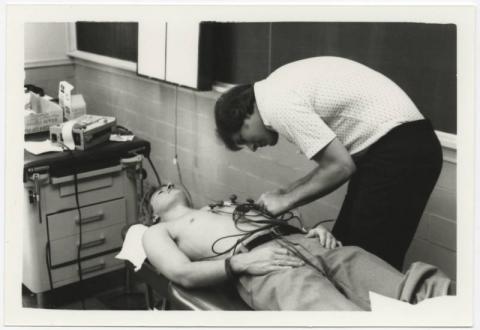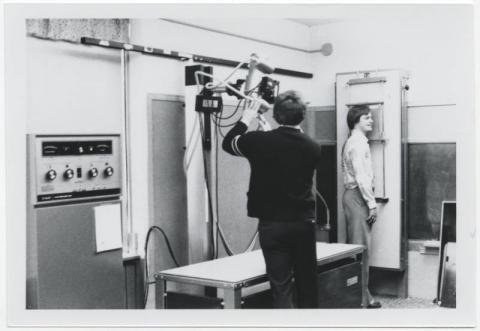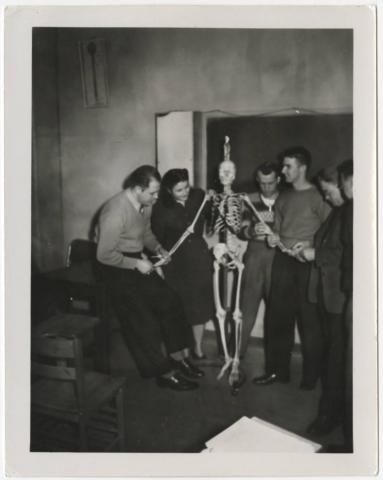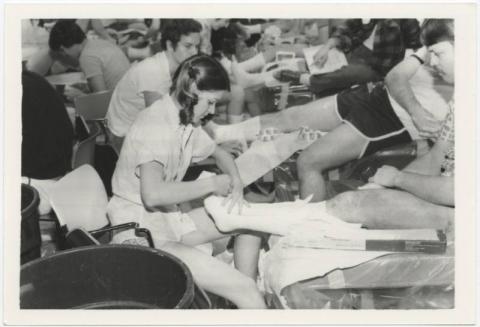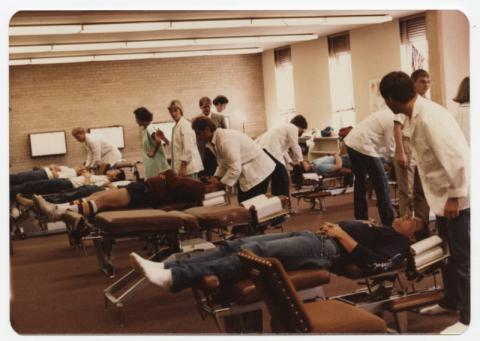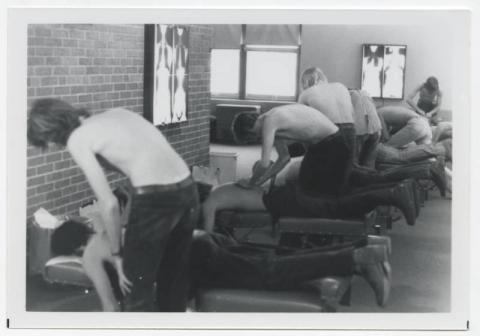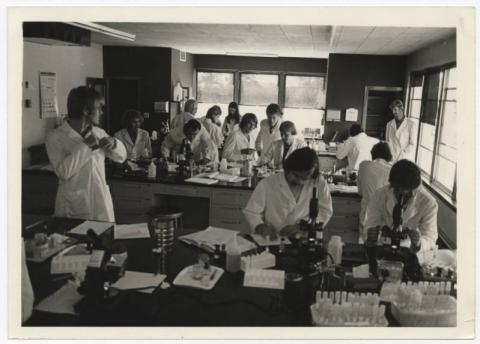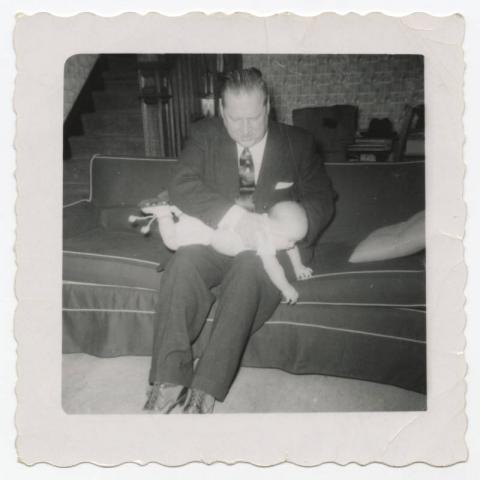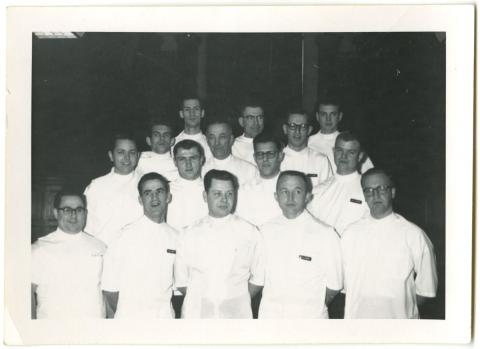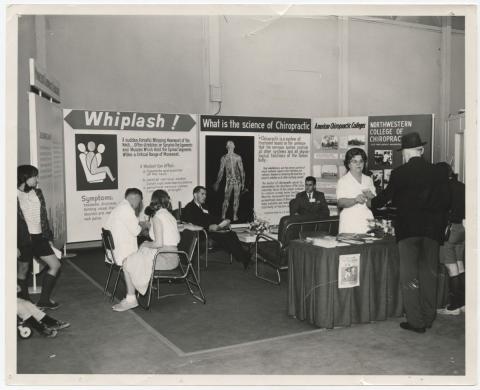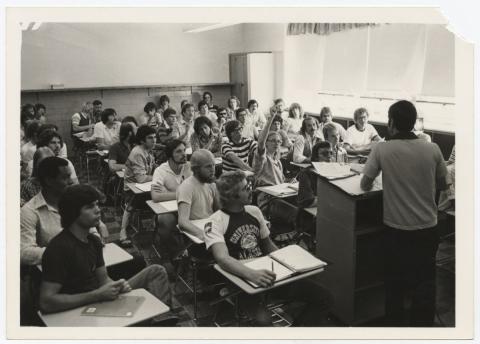Primary Source Set
by Susan J. Vossberg, MLIS, Northwestern Health Sciences University
Chiropractic, the alternative form of healing through hands-on spinal manipulation, was developed in 1895 in Davenport, Iowa by David D. Palmer. Chiropractors came to Minnesota to set up practices and open schools beginning in the late nineteenth century. Some of the Chiropractic schools in Minnesota history include:
- The National School of Neuropathy and Psycho-Magnetic Healing (1899)
- The Hygeia Institute of Psycho-Therapeutics (1900)
- Northwestern College of Chiropractic and Cure (Mankato, 1900?)
- Minnesota Chiropractic College (1920)
- The Lincoln College of Chiropractic (1910s)
- The St. Paul College of Chiropractic (1914)
- Midwest College of Chiropractic (1921)
- Northwestern College of Chiropractic (1941-1999)
- Northwestern Health Sciences University (1999 to present)
Since the advent of chiropractic medicine, it has been an uphill battle to establish it as a legitimate form of medicine. Minnesota chiropractors worked hard to combat opposition to the profession. These efforts included establishing both educational and licensing requirements for all students and practitioners. After more than a century of chiropractic being seen as dubious, members of the medical community now see chiropractic as a legitimate form of medicine. In Minnesota chiropractors are practicing in hospitals and clinics all across the state. There are currently over 3,000 licensed chiropractors in the state.
In 1941 Dr. John B. Wolfe and others started Northwestern College of Chiropractic and began classes on June 2, 1941 at their campus on the sixth floor of the Medical Block, an office building on Nicollet Avenue in Minneapolis. Northwestern College of Chiropractic changed its name to Northwestern Health Sciences University in 1999, and is currently the state’s only chiropractic college.
Discussion Questions & Activities
- How is the practice of chiropractic different from the practice of mainstream medicine?
- What were the major points and outcome of the lawsuit between the American Medical Association and Chester Wilk?
- What are some of the steps that the chiropractic profession took to legitimize their practice?
- Why were some chiropractors fined or jailed for treating patients?
- Have students work in small groups and discover/discuss what the main differences are between medical doctors and chiropractors. Discuss the differences, especially the chiropractic idea of no needles, no drugs. Determine if anybody in your group has been treated, or is being treated by a chiropractor, massage therapist, or acupuncturist, or if any of them have taken their pets to a chiropractor, and ask them to share their experiences.
eLibrary Minnesota Resources (for Minnesota residents)
"Chiropractic." Britannica School, Encyclopædia Britannica, 1 Nov. 2010. Accessed 24 July 2019.
"Chiropractic." World of Health, Gale, 2007. Gale In Context: High School. Accessed 9 Oct. 2025.
"Chiropractors." Career Information Center, edited by Kristin B. Mallegg and Joseph Palmisano, 10th ed., vol. 8: Health Science, Macmillan Reference USA, 2014, pp. 39-41. Gale In Context: High School. Accessed 9 Oct. 2025.
Davis, Jeffrey M. "Understanding chiropractic natural alternative care." The Exceptional Parent, Aug. 2013, p. 34+. Professional Collection, Accessed 24 July 2019.
"The Development of New Systems of Alternative Medicine: Homeopathy, Osteopathy, Chiropractic Medicine, and Hydrotherapy." Science and Its Times, edited by Neil Schlager and Josh Lauer, vol. 5, Gale, 2001. Gale In Context: High School. Accessed 9 Oct. 2025.
Wexler, Barbara. "Alternative Medicine." Healthy Living, edited by Elizabeth P. Manar, 2nd ed., vol. 2: Environmental Health, Preventive Care and First Aid, Medications, Mainstream Medical System, Alternative Medicine, UXL, 2013, pp. 367-402. Gale In Context: High School. Accessed 9 Oct. 2025.
Additional Resources for Research
“Chiropractic: In Depth.” National Center for Complementary and Integrative Health, U.S. Department of Health and Human Services, 30 Apr. 2019, Accessed 25 July 2019.
“Chiropractic Controversy and Criticism.” Wikipedia, Wikimedia Foundation, Accessed 25 July 2019.
“Chiropractors Go To Jail - Nanaimo Chiropractor.” www.facebook.com/NanaimoChiropractor. Pure Chiropractic in Nanaimo, BC, 27 Mar. 2014. Accessed 25 July 2019.
Fishbein, Morris. “Going to Jail for Chiropractic: the Untold Story of the Medical War Against Chiropractors.” Accessed 25 July 2019.
“Frequently Asked Questions About Chiropractic.” American Chiropractic Association, Frequently Asked Questions. Accessed 25 July 2019.
“History of Minnesota Animal Chiropractic Care.” Minnesota Animal Chiropractic Care, 26 Jan. 2013. Accessed 25 July 2019.
Howell, Monica R. “Teaching Chiropractic in the North Star State.” Teachingchiroinmn. Accessed 25 July 2019.
Smith-Cunnien, Susan. “Without Drugs or Knives: the Early Years of Chiropractic.” Minnesota History Magazine, Minnesota Historical Society, Spring, 2005. Accessed 25 July 2019.
“What Is Chiropractic?” Minnesota Animal Chiropractic Care, 23 Jan. 2013. Accessed 25 July 2019.
Published onLast Updated on
